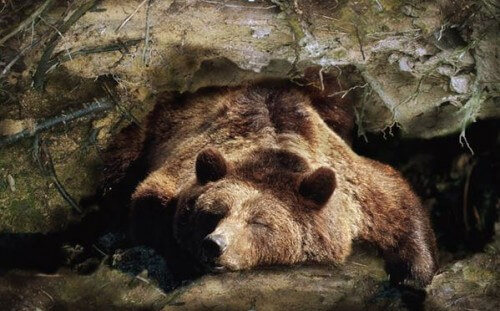What can humans learn from animals that remain in continuous hibernation for several months

Hibernation is a complicated solution to a simple problem. Food in winter is scarce. To survive the season of scarcity, some species of animals, such as arctic ground squirrels and black bears, enter a dormant state during which physiological changes occur in their bodies that allow them to survive despite the lack of food, water and movement. Researchers and doctors alike are interested in knowing how the hibernation tricks might help human health.
The danger: stroke
Insight: Blood flow in the brain of arctic ground squirrels drops during hibernation to one tenth of the normal state. Normally, such a lack of oxygen would have caused a stroke. But the squirrels can survive throughout the winter because the metabolic rate in their bodies drops to a rate of two percent of the rate in the summer and therefore much less oxygen is needed to sustain them. It's possible that if emergency responders could slow the metabolism to the same extent immediately after a stroke, perhaps by cooling the body, permanent brain damage could be prevented, says Brian Barnes, a biologist at the University of Alaska at Fairbanks.
Danger: diabetes
Insight: When people gain weight they often stop responding to insulin. This hormone regulates the amount of glucose that cells take up from the blood. Excess blood sugar causes type 2 diabetes. However, grizzly bears that add more than 45 pounds to their body weight each fall do not have diabetes. A recent study found that the fat cells of grizzly bears become more sensitive to insulin as they prepare for hibernation, allowing the bears to continue processing and storing sugar. Scientists at the biotechnology company Amgen are testing whether it is possible to achieve a similar phenomenon in people with diabetes by adjusting the level of this protein in their blood.
Danger: bone depletion (osteoporosis)
Insight: If humans were to lie in one place for a long time without food, their bones would slowly disintegrate. In contrast, a black bear emerges from its den as strong as ever because its bones are recycled during hibernation at a rate about 25% lower than normal levels. Researchers at Colorado State University are now trying to identify the hormones that control this extreme restriction on bone turnover. Their goal is to produce a medicine that, like the bears, will protect the bone density of people who are at high risk of suffering from bone loss.
Danger: heart disease
Insight: During heart surgery, when the heart stops beating, the patient suffers from a lack of oxygen. To cope with the deficiency, the body switches from an aerobic (aerobic) metabolism to an anaerobic (anaerobic) metabolism. The change produces lactic acid whose accumulation can kill cells. This type of damage does not occur to arctic ground squirrel cells during their hibernation because the squirrels break down more lipids than sugars even when their heart rate drops to one beat per minute. Researchers at Duke University and the University of Alaska at Fairbanks are collaborating to try to understand how this species prioritizes lipids as fuel in hypoxic conditions. Finding a way to get patients undergoing heart surgery to use this pathway could reduce the extent of organ damage during surgery.
The article was published with the permission of Scientific American Israel
